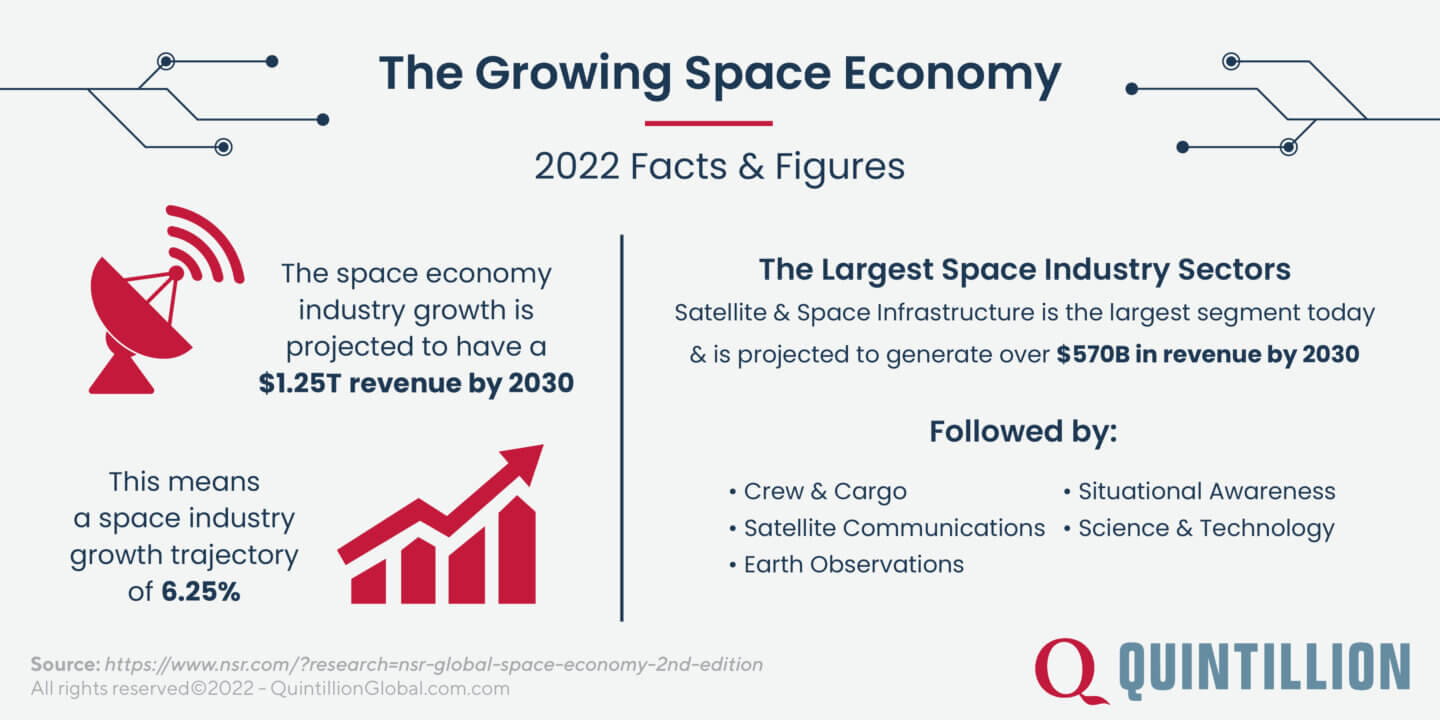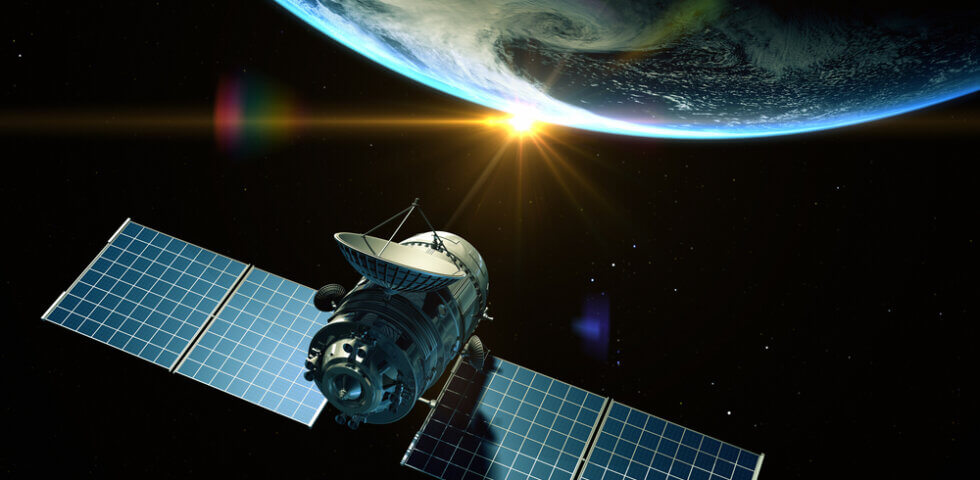Space is a frontier for human exploration and opportunity. From stepping foot on the moon to launching satellites into orbit, humans continue to push the limits of how we can better understand space and utilize it to advance life on Earth.
We’ve come leaps and bounds from 1958 when the first satellite was launched into space. While the first satellites were primitive in comparison to the space technology of today, they were the first step toward the global space tech industry we have today.
Space is no longer a sphere that government organizations and world powers only utilize. Through modern satellite technology, the public can now benefit from the research and innovation that has taken place over decades. Without ever leaving the atmosphere, essentially anyone on Earth can see the world from above.
Viewing the world from this vantage point unlocks limitless opportunities for businesses, researchers, government organizations, and individuals across the globe. And we’ve become more advanced in our ability to capture imagery and data from space and translate that into 3D maps and practical information that a wide range of industries and decision-makers rely on.
As businesses and organizations across the world have come to recognize the value satellites bring, a new industry has emerged. There is a high demand for the information and services satellites provide, so naturally, the innovators of this modern world have found unique ways to meet that demand.
The Growth of the Space Tech Industry
As space technology has entered the commercial realm, space technology has become more accessible than ever before. From breakthroughs in satellite broadband Internet access to Earth observation services, there is more public interest and demand for satellite services than ever before.

The Impact of the Private Sector on The Space Industry
Not only is the power of space now being utilized by the public, but private enterprises are playing a major role in the commercialization and growth of the space industry. This is a major shift as historically federal governments have been the primary actors in space investigation and utilization.
Not surprisingly, there are logistical challenges that come with private organizations entering and sending infrastructure out into space. This shift has led to a new wave of innovation in space technology. As more and more satellites are launched, space congestion is an anticipated issue. However, the recent advancements (as well as decreases) in satellite launch costs have made it affordably feasible for private companies to take part in the booming space industry. Not only that, but there are just as many investors willing to support this growth.
The Shift to a Service Model for Space Tech
With the private sector becoming much more involved in the space industry, there has been a major shift in business models. While the space industry used to revolve mostly around product sales, it has now moved toward a service model that allows companies to harness to the power of satellites without actually investing in or building the infrastructure themselves. Rather, they can access the service with a subscription.
This transformation in the space industry is often compared to a similar shift that occurred in the computer sector. While computer users previously had to install software on their computers to access programs, many companies now release applications that are paid for with a subscription and hosted by a cloud provider. This new model is referred to as the “Software as a Service” model.
One example of this is Microsoft Office 365. Users previously would pay a one-time fee to purchase Microsoft products that would be installed onto their computers. With Microsoft Office 365, users can now pay a monthly subscription to access and use the Microsoft suite without needing to download any software.
Similarly, many private space tech companies are moving to a “Space as a Service” model for space data, satellites, and ground station services.
The Benefits of Ground Station as a Service
The benefits of the Space as a Service model extend to both end-users and infrastructure companies. For businesses and organizations that utilize satellite data to create products or make decisions, they can easily get the service they need without handling the setup costs, regulations, and ongoing management of launching satellites and downlinking data.
For private companies in the space sector, this model makes it possible for organizations to specialize in a specific aspect of the space tech industry. For example, a company can enter the space market by specializing in building and launching satellites and then find a ground station as a service provider to downlink data to.
With more companies wanting to build and launch new satellites, the introduction of Ground Station as a Service (GSaaS) meets a major need in the continuing growth of the space industry. By not having to build a ground station (or increase operational costs for upkeep), satellite companies can save majorly. In addition, by working with a GSaaS provider, satellite companies can more easily scale their services without needing to build more ground infrastructure to handle future growth.
With the GSaaS model, satellite companies would pay for the service via a subscription or pay-per-minutes basis. There is often no long-term commitment. With programs like the Freedom™ Software Platform, companies can communicate with, schedule, and automate their satellite data processing utilizing a secure, single-entry VPN. And cloud services make it easier to process, store, and access that data.
Quintillion as a GSaaS Provider
Quintillion has entered this growing space with the completion of its High Latitude Data Acquisition ground station in early 2021. This satellite ground station was built in partnership with ATLAS Space Operations, which is a leader in ground station technology services and the creator of the Freedom™ Software Platform.
The HiLDA ground station provides downlinking services for polar-orbiting satellites, and it is available for use from both commercial and government entities. This facility offers dedicated antenna pad leasing which allows companies to not only build antennas on, but to also access a full suite of services (including equipment colocation, power, O&M services, and backhaul solutions) as well.
Additionally, it is located in Utqiaġvik at 72 degrees latitude, making it the highest-latitude ground station in the US. It currently operates on S and X band frequencies, with plans to add K band.
The HiLDA ground station connects via fiber to the Equinix Seattle (SE2) IBX data center, linking it to major exchanges and clouds access providers and allowing satellite companies who utilize Quintillion for GSaaS to access the Equinix Fabric™.
With the advantage of its Arctic, low-latency connection to both the Freedom Platform and Equinix Fabric, Quintillion’s ground station is a strategic location for building an antenna and achieving a higher number of polar-orbiting satellite passes a day.
Quintillion offers a full-service solution for processing satellite data. Contact us to learn more.















